Related Research Articles
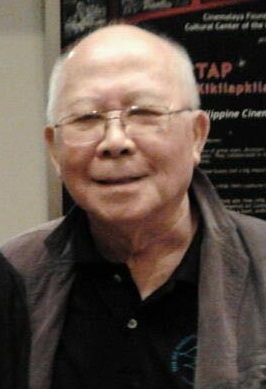
Bienvenido L. Lumbera was a Filipino poet, critic and dramatist. Lumbera is known for his nationalist writing and for his leading role in the Filipinization movement in Philippine literature in the 1960s, which resulted in his being one of the many writers and academics jailed during Ferdinand Marcos' Martial Law regime. He received the Ramon Magsaysay Award for Journalism, Literature and Creative Communications in 1993, and was proclaimed a National Artist of the Philippines for literature in 2006. As an academic, he is recognized for his key role in elevating the field of study which would become known as Philippine Studies.
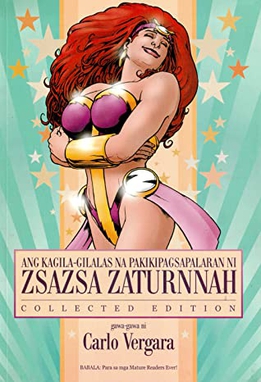
Zsazsa Zaturnnah is a fictional comic book superheroine created by Filipino illustrator and graphic designer Carlo Vergara. The character first appeared in the Filipino graphic novel, Ang Kagila-gilalas na Pakikipagsapalaran ni Zsazsa Zaturnnah, originally a self-published work in December 2002 consisting of two parts. It was later distributed and merged in a single volume by Visprint Inc.. The graphic novel won a National Book Award in 2003 given by the Manila Critics Circle. It was the 12th bestselling fiction book among Philippine publications in 2005 based on the records of National Book Store.
Nicanor G. Tiongson is a critic, creative writer and academic from the Philippines. He holds a Bachelor of Humanities degree from the Ateneo de Manila University, and M.A. and Ph.D. in Philippine Studies from the University of the Philippines. A founding member of the Manunuri ng Pelikulang Pilipino, Tiongson is currently Professor Emeritus of Film and Audio-visual Communication at the College of Mass Communication in U.P. Diliman.

Jose Y. Dalisay Jr. is a Filipino writer. He has won numerous awards and prizes for fiction, poetry, drama, non-fiction and screenwriting, including 16 Palanca Awards.
Teo Antonio is a Filipino poet. He was born in Sampaloc, Manila. He was educated at the University of Santo Tomas where he studied Fine Arts. Antonio is the son of Emilio Mar Antonio, hari ng balagtasan during the 1950s.
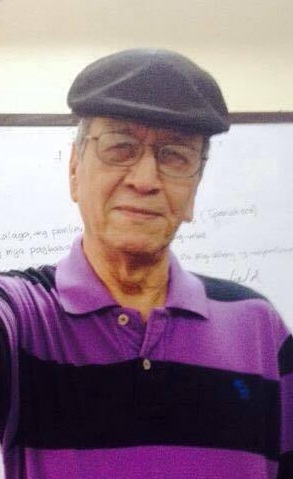
Rogelio Lunasco Ordoñez also known as Ka Roger, was a multi-awarded Filipino fiction writer, poet, activist, journalist and educator. He was one of the authors of the iconic Tagalog literature anthology Mga Agos sa Disyerto in the 1960s. He was a contributor to Liwayway Magazine, Pilipino Free Press, Asia-Philippines Leader, Pilosopong Tasyo, Diario Uno and Pinoy Weekly.

Lope K. Santos was a Filipino Tagalog-language writer and former senator of the Philippines. He is best known for his 1906 socialist novel, Banaag at Sikat and to his contributions for the development of Filipino grammar and Tagalog orthography.
Ligaya G. Tiamson-Rubin, is a multiple Carlos Palanca Memorial Awards for Literature recipient, and currently a professor of the University of the Philippines Diliman. Today, she is teaching Filipino 25, Mga Ideya at Estilo under the Department of Filipino and Philippine Literature at the College of Arts and Letters, University of the Philippines Diliman in Diliman, Quezon City.
Vincent Abenojar De Jesus is a Filipino composer, librettist, musical scorer, and musical director for theater, television, and film. He is also a writer, lyricist, actor, singer, and educator. He attended the University of the Philippines Diliman College of Music, and majored in piano and voice. He was a member of the Philippine Educational Theater Association from 1983 to 2020.
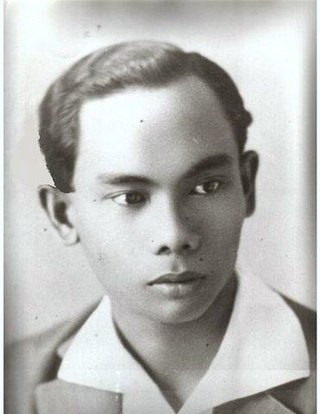
Alberto Segismundo Cruz was a Filipino poet, short story writer and novelist. Three of his novels have been published by Ateneo de Manila Press.
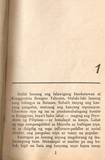
Satanas sa Lupa, subtitled “nobelang pangkasalukuyan”, is a 1970 Tagalog-language novel by Filipino author and scriptwriter Celso Al. Carunungan, one of the “titans of Philippine literature”. The novel criticizes the Philippine government and society during the early part of the 1970s, a reason why the author had been included among the group known as "Class 1081", Filipinos imprisoned when Martial Law was declared by Ferdinand Marcos in 1972.

May Pagsinta'y Walang Puso was a 1921 Tagalog-language novel written by renowned Filipino poet, journalist, and novelist Iñigo Ed. Regalado. A story of romance, the novel revolves around love, marriage, adultery, unfaithfulness, treachery, hatred, disowning, and forgiveness. May Pagsinta'y Walang Puso was one of the novels Regalado had written during the Golden Age of the Tagalog Novel (1905-1935).
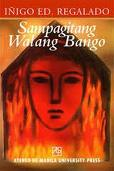
Sampagitang Walang Amoy, also rendered as Sampaguitang Walang Bango, was a 1921 Tagalog-language novel written by notable Filipino novelist Iñigo Ed. Regalado. The theme of the novel revolves around love, romance, treachery, and endurance. In the novel, Regalado depicted the City of Manila during the American occupation of the Philippines but before World War II. Sampagitang Walang Bango was one of the novels Regalado had written during the Golden Age of the Tagalog Novel (1905–1935).
Efren Reyes Abueg is a well-known and recognized Filipino-language creative writer, editor, author, novelist, short story writer, essayist, fictionist, professor, textbook writer, and anthologist in the Philippines. His works appeared on magazines such as Liwayway, Bulaklak, Tagumpay, Mod, and Homelife.
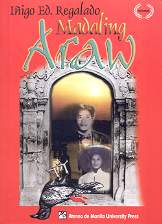
Madaling Araw ("Dawn") is a 1909 Tagalog-language novel written by Filipino novelist Iñigo Ed. Regalado. The 368-page novel was published in Manila, Philippines by the Aklatang J. Martinez during the American period in Philippine history (1899-1946). Madaling Araw won for Regalado a Panitikan Series Philippine National Book Award. The novel is both a romance novel and a political novel.
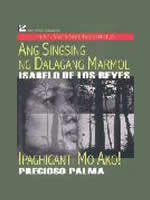
Ipaghiganti Mo Ako...! is a 1914 Tagalog-language novel written by Filipino novelist and dramatist Precioso Palma. The 207-page book was published in Manila by Limbagang Banahaw during the American era in Philippine history (1898-1946). The 1914 version of the novel has an afterword written by Julian C. Balmaceda.

Anino ng Kahapon is a 1907 Tagalog-language novel written by Filipino novelist Francisco Laksamana. The 294-page novel was published in Manila by Santiago L. Abillar and SP during the first few years of American period in Philippine history. The 1907 version was illustrated by P Imperial. The novel was republished by the Ateneo de Manila University Press in 2002. According to the Ateneo de Manila University Press, the novel was written by Laksamana to help provide the readers with a "nostalgic recollection of the period of mournful Filipinoness". According to literary critic Epifanio San Juan, Jr. — apart from being a historical and political novel — Anino ng Kahapon was one of the romance novels and novels about heroic Philippine characters produced by Filipino authors from 1900 to contemporary times.
Ang Lihim ng Isang Pulo: Nobelang Tagalog – "The Secret of an Island: A Tagalog Novel " – is a Tagalog-language novel written in 1926 by Filipino novelist Faustino S. Aguilar. The 353-page novel was first published by Sampaguita Press in the Philippines in 1927. It was republished in Manila by Benipayo Press in 1958.

Zsazsa Zaturnnah Ze Moveeh is a 2006 Filipino superhero musical film directed by Joel C. Lamangan and written by Dinno Erece, based on Carlo Vergara's graphic novel. The film stars Zsa Zsa Padilla, BB Gandanghari, Chokoleit, Pops Fernandez and Alfred Vargas, and follows a gay Filipino beautician who, after swallowing a space rock, becomes imbued with superpowers.
Ramon Guillermo is a Filipino novelist, translator, poet, activist, and academic in the field of Southeast Asian Studies.
References
- 1 2 3 4 5 "Soledad S. Reyes". Vibal Foundation, vibalfoundation.org. Archived from the original on April 16, 2013. Retrieved May 25, 2011.
- 1 2 3 4 5 "Soledad S. Reyes". Institute of Creative Writing, UP Diliman, panitikan.com.ph. Archived from the original on January 12, 2011. Retrieved May 25, 2011.
- 1 2 "100 Nobelang Tagalog". Filipiniana.net. Archived from the original on November 4, 2010. Retrieved May 29, 2011.
- ↑ "Rosario de Guzman Lingat (1924-1997):The Burden of Self and History by Soledad Reyes". Ateneo de Manila University Press, ateneopress.org. Archived from the original on July 20, 2011. Retrieved May 25, 2011., Book info: This source mentions that "Dr. Soledad S. Reyes is Professor at the Interdisciplinary Studies Department of the Ateneo de Manila University."
- 1 2 3 "Soledad S. Reyes". Goodreads Inc, goodreads.com. Retrieved May 25, 2011.
- ↑ Mendoza, Emilou Lindsay and Irene Villarin Gonzaga. "From Darna to Zsazsa Zaturnnah: Desire and Fantasy and Other Way" Archived July 25, 2011, at the Wayback Machine (Quick View), Visual Literacy and Popular Culture in the Philippine Literature Classroom: Teaching Filipino Literature through the Graphic Novel, 2nd CONFERENCE ON FILIPINO AS A GLOBAL LANGUAGE, Hilton Valley Hotel, San Diego California, January 15–18, 2010.
- ↑ "Marasigan, Reyes, Ruiz named emeritus professors" . Retrieved May 29, 2011.
- ↑ "Literary Criticism, National Book Awards, Annual Award for Outstanding Philippine Books". Manila Critics Circle. Retrieved May 28, 2011.